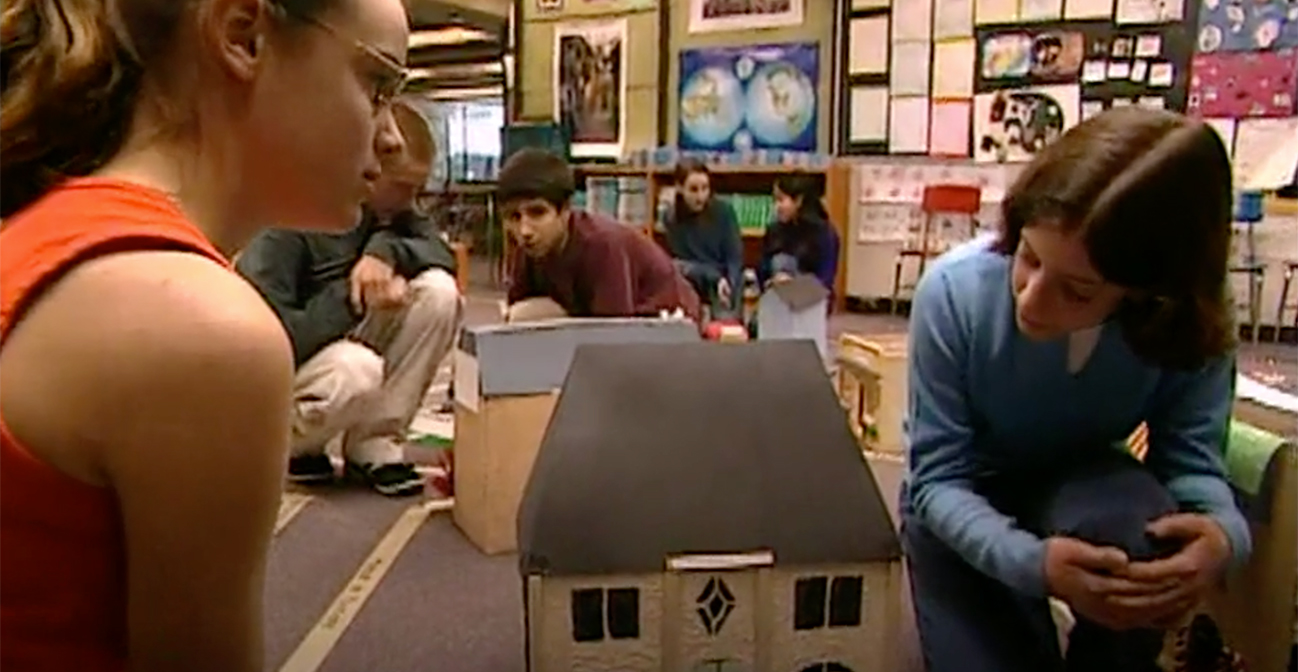Join us for conversations that inspire, recognize, and encourage innovation and best practices in the education profession.
Available on Apple Podcasts, Spotify, Google Podcasts, and more.

CLASSROOM AT A GLANCE
Teacher
Robin Neuman
Language
French
Grades
8
School
Concord Middle School, Concord, Massachusetts
Lesson Date
January 17
Class Size
19
Schedule
48 minutes, four days a week
In this lesson, students practice how to give and follow directions. Students begin by describing several buildings in a classroom-sized model they built of a French city. Then they assume the roles of tour guides and tourists and take turns giving and following directions. At the end of the lesson, students randomly select a building name from a bag and describe the building to the class.
Communication: Interpersonal
Cultures: Practices, Products
Comparisons: Cultural
backward planning
In backward planning, also called backward design, the teacher plans a unit or lesson by first identifying the desired end task or product, then working in reverse to identify the prerequisite learning tasks and benchmark assessments.
thematic units
Thematic units are designed using content as the organizing principle. Vocabulary, structures, and cultural information are included as they relate to the themes in each unit. For an excellent example of theme-based units, see the Nebraska Foreign Language Education Web site in General Resources.
Reflect on Your Practice
As you reflect on these questions, write down your responses or discuss them as a group.
Watch Other Videos
Watch other videos in the Teaching Foreign Languages K–12 library for more examples of teaching methodologies like those you’ve just seen. Note: All videos in this series are subtitled in English.
Put It Into Practice
Try these ideas in your classroom. Where it’s not already evident, reflect on how to adapt an idea that targets one performance range for application to other performance ranges.
World-Readiness Standards for Learning Languages
The World-Readiness Standards for Learning Languages create a roadmap to guide learners to develop competence to communicate effectively and interact with cultural understanding. This lesson correlates to the following Standards:
Interpersonal Communication
Learners interact and negotiate meaning in spoken, signed, or written conversations to share information, reactions, feelings, and opinions.
Relating Cultural Practices to Perspectives
Relating Cultural Products to Perspectives
Cultural Comparisons
Lesson Materials
Building Guidelines (PDF, 14 K)
Guidelines students used to research and build their French city model
Building Rubrics (PDF, 13 K)
Rubrics that Ms. Neuman used to assess students on different aspects of the building project
Curriculum References
ACTFL Proficiency Guidelines
Concord Public Schools: Teaching and Learning Reports and Documents
Massachusetts Curriculum Frameworks
Robin Neuman’s Additional Resources
Web Resources:
Google France
The French-language version of the popular search engine. Note: Students used this site to research French buildings.
The Paris Pages
A collection of resources about Paris (available in English and French). Note: Students used this site to research French buildings.
Yahoo! France
The French-language version of the popular search engine. Note: Students used this site to research French buildings.
Print Resources:
Ellis, D.L. Life in a French Town. Lincolnwood, IL: NTC/Contemporary Publishing Co., 1988.
Rothfeld, Steven (photographer), and André Aciman. Entrez: Signs of France. New York: Artisan, 2001.